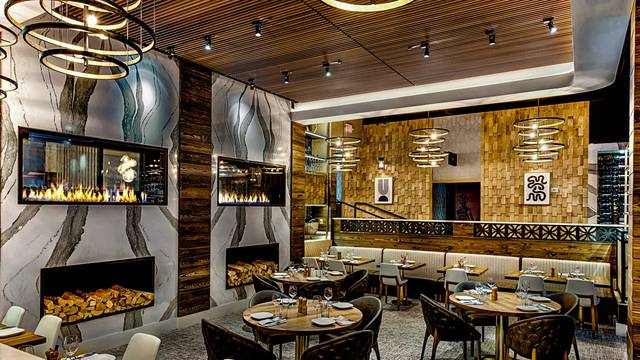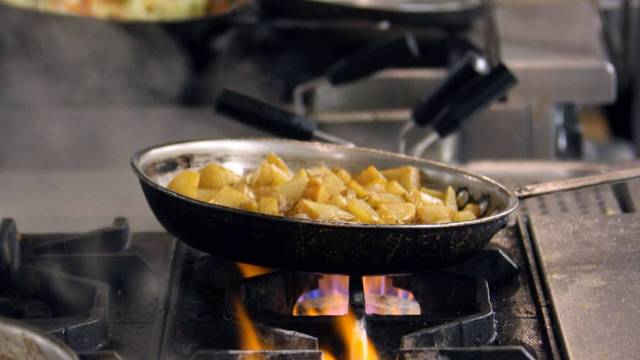Savor Authentic Oriental Food With a Pan-Asian Spin for a Cooking Adventure
Starting a culinary trip via genuine Eastern food, improved with a Pan-Asian twist, provides an unique possibility to check out the rich tapestry of flavors that define the area's varied culinary practices. This experience invites you to relish the elegant balance of preferences-- sweet, salty, spicy, and sour-- harmonized by fragrant natural herbs and seasonings. Imagine the cutting-edge blend of Thai curry and ramen or the unanticipated pleasure of sushi burritos. As you consider these luring recipes, think about the social stories and historical impacts that form them, each bite offering a story waiting to be uncovered.

Exploring Pan-Asian Tastes
In the world of international gastronomy, Pan-Asian cuisine stands apart for its remarkable variety and the unified interplay of flavors from numerous Oriental cultures. This cooking method celebrates the special active ingredients and abundant customs found throughout the continent, developing a tapestry of preferences that is both appealing and enjoyable. Trick to Pan-Asian food is its capability to balance different flavors-- pleasant, salty, spicy, and sour-- while highlighting the freshness and high quality of each component.
From the umami-rich soy sauce of Japan to the intense chili peppers of Thailand, Pan-Asian cuisine provides a substantial palette of tastes. These elements are frequently incorporated in creative methods, boosting dishes with layers of intricacy. For example, using great smelling herbs such as lemongrass and cilantro, usual in Vietnamese and Thai cuisine, includes a refreshing brightness to recipes, while the incorporation of coconut milk delivers a luscious, rich appearance.
The emphasis on fresh produce and aromatic flavors ensures that each meal is not only a banquet for the preference buds but likewise for the senses. Pan-Asian food welcomes diners to start a cooking journey, checking out the large and differed landscapes of Asian gastronomy with every bite.
Fusion Dishes to Try
While Pan-Asian food is commemorated for its typical flavors, the modern cooking landscape is progressively embracing combination recipes that mix these traditional aspects with influences from various other areas. This ingenious strategy not only honors the abundant heritage of Eastern cooking arts however also introduces novel taste experiences that attract contemporary palates.
An archetype of such a blend recipe is the Korean-Mexican taco, where seasoned bulgogi beef is covered in a cozy tortilla, topped with kimchi and a hot gochujang-infused salsa. This combination marries the vibrant, savory tastes of Korea with the vibrant, fresh aspects of Mexican food. In a similar way, sushi burritos have actually gained appeal, joining together the delicate virtuosity of Japanese sushi with the passionate, hand-held convenience of a burrito, typically featuring fusion active ingredients like tempura shrimp and avocado with a drizzle of wasabi mayo.
An additional notable dish is Thai curry ramen, which instills the luscious, fragrant spices of Thai curry into the soothing brew of standard Japanese ramen, creating a harmonious blend that entices the senses. These blend dishes prolong past plain uniqueness; they represent a culinary discussion in between cultures, encouraging expedition and innovation on the planet of Pan-Asian cuisine.
Necessary Active Ingredients and Spices
To genuinely appreciate Pan-Asian cuisine, one need to recognize the crucial components and seasonings that create its foundation. This diverse culinary design attracts from an abundant tapestry of Asian traditions, employing a harmonious blend of flavors and textures.
Aromatic elements are pivotal, with lemongrass, ginger, and garlic being ubiquitous across various Pan-Asian dishes. These ingredients offer a great smelling base that enhances the intricacy of flavors. Flavors such as star anise, cardamom, and cinnamon introduce warmth and character, echoing influences from regions like China and India.

Cooking Techniques and Tips
Understanding the art of Pan-Asian food needs familiarity with its distinct cooking strategies, each adding to the lively tapestry of flavors this cooking tradition is celebrated for. Central to these approaches is the stir-fry, a quick cooking strategy that protects the nutritional stability and brilliant colors of components. Making use of a frying pan, the stir-fry approach enables also warmth distribution, necessary for achieving the characteristic texture and taste equilibrium of Pan-Asian recipes.
One more essential strategy is steaming, especially common in Chinese cuisine. This mild method preserves the natural flavors and nutrients of active ingredients, making it optimal for seafood and veggies. Dumplings, a beloved staple, usually take advantage of steaming, leading to soft, delicious appearances.
Barbecuing, likewise essential, passes on great smoky depths to dishes such as Korean bulgogi or Japanese yakitori (best asian restaurant Islamabad). This method typically entails seasoning components, allowing tastes to pass through deeply before cooking over an open fire or hot plate
Finally, understanding the art of stabilizing tastes-- wonderful, sour, salty, bitter, and umami-- is crucial. family restaurants near me Appropriately layering these aspects can raise a meal from normal to amazing, offering a complicated and pleasing cooking experience that embodies the significance of Pan-Asian food.
Dining Experiences Worldwide
Around the world, Pan-Asian food supplies an unparalleled eating experience, celebrated for its rich tapestry description of tastes and vivid presentations. This culinary sensation has actually transcended cultural limits, catching the hearts and tastes of food fanatics worldwide. In multicultural cities fresh York, London, and Sydney, Pan-Asian dining establishments offer as fusions where cooking traditions from Thailand, Japan, China, and beyond converge, supplying diners with a diverse mix of meals that highlight the area's diversity.
The worldwide appeal of Pan-Asian cuisine depends on its capability to use both credibility and development. Chefs masterfully marry typical ingredients such as lemongrass, soy sauce, and miso with contemporary techniques, leading to recipes that are both refreshingly brand-new and familiar. This fusion allows diners to start a cooking journey that respects heritage while embracing modernity.
In addition, eating experiences are boosted through thoughtfully made environments that mirror the values of Pan-Asian appearances. From minimalist Japanese-inspired insides to lively Thai-themed spaces, each dining establishment supplies an unique atmosphere that enhances the culinary offerings. Therefore, clients are not merely consuming a dish but partaking in a social experience, making Pan-Asian eating a truly international phenomenon.
Verdict
The expedition of Pan-Asian cuisine provides an extensive understanding of the elaborate interaction of tastes and culinary practices across Asia. By accepting combination meals such as Thai curry ramen and sushi burritos, the cooking journey not only highlights the flexibility of conventional click for more active ingredients however also showcases ingenious modern techniques. This gastronomic adventure, improved by essential spices and cooking methods, provides an one-of-a-kind opportunity to appreciate the social diversity and culinary artistry that specify Pan-Asian cuisine on an international scale.
Beginning on a cooking journey via authentic Oriental food, enhanced with a Pan-Asian spin, supplies a distinct opportunity to discover the rich tapestry of tastes that define the area's diverse cooking traditions.In the world of global gastronomy, Pan-Asian food stands out for its impressive variety and the harmonious interaction of tastes from different Eastern cultures. Secret to Pan-Asian food is its ability to balance contrasting flavors-- pleasant, salty, spicy, and sour-- while highlighting the quality and top quality of each component.
